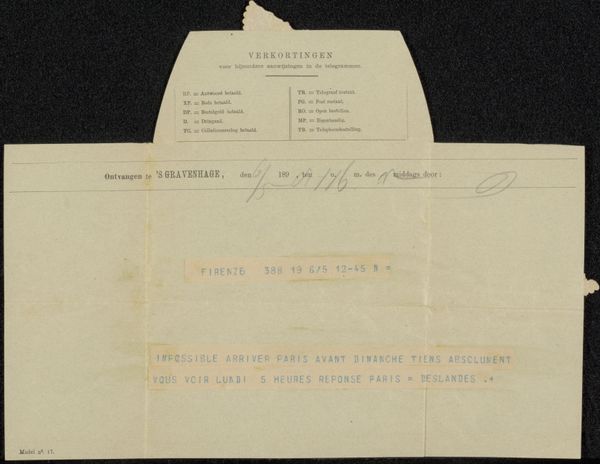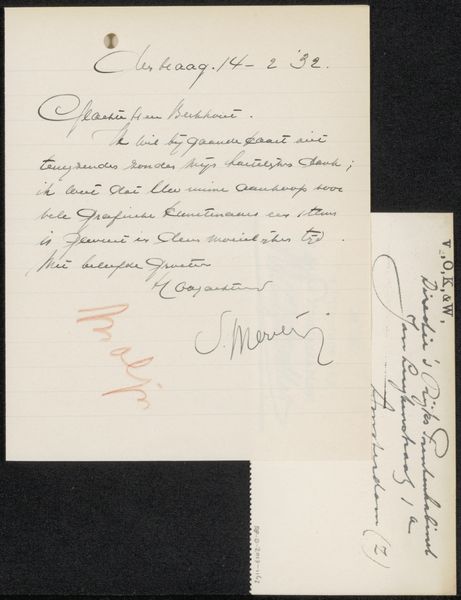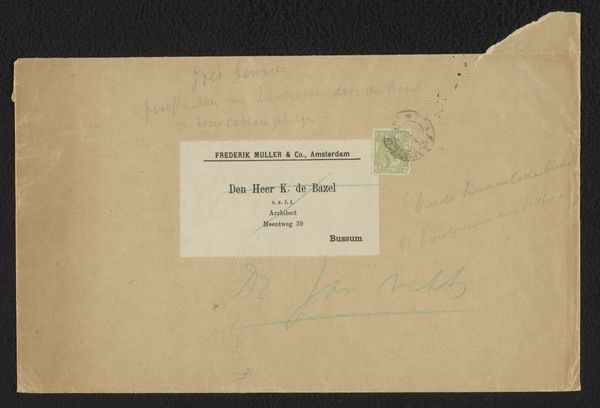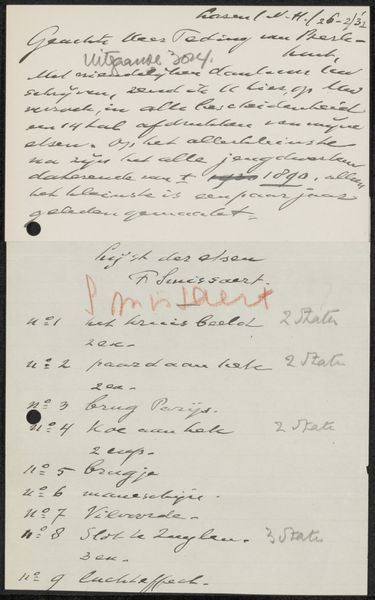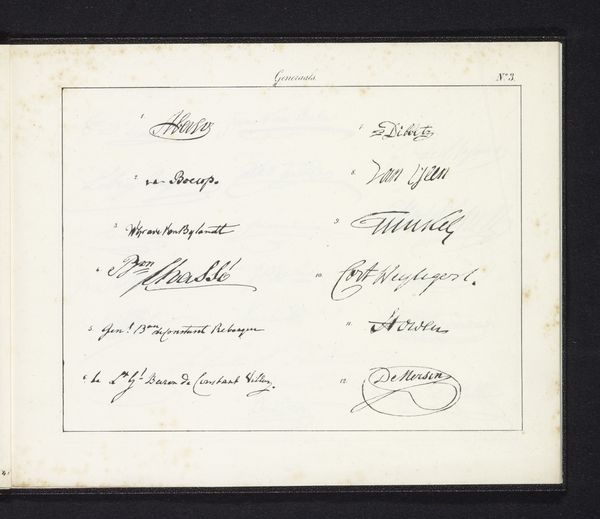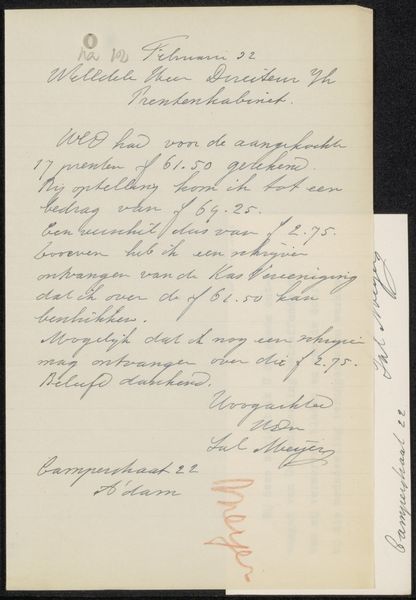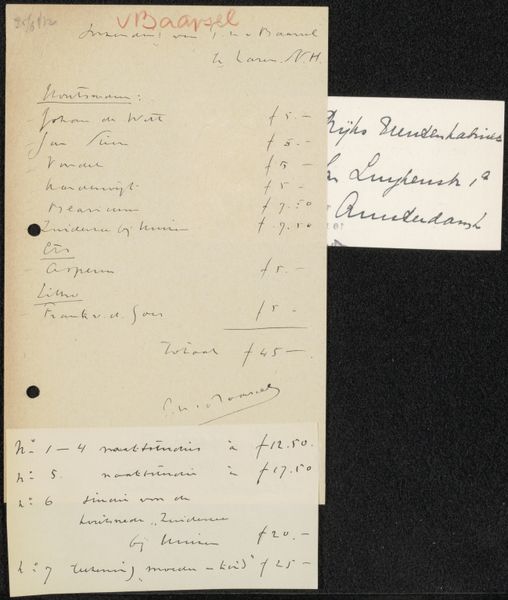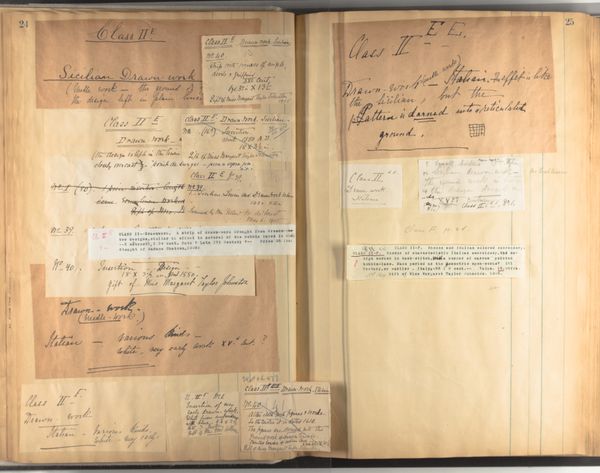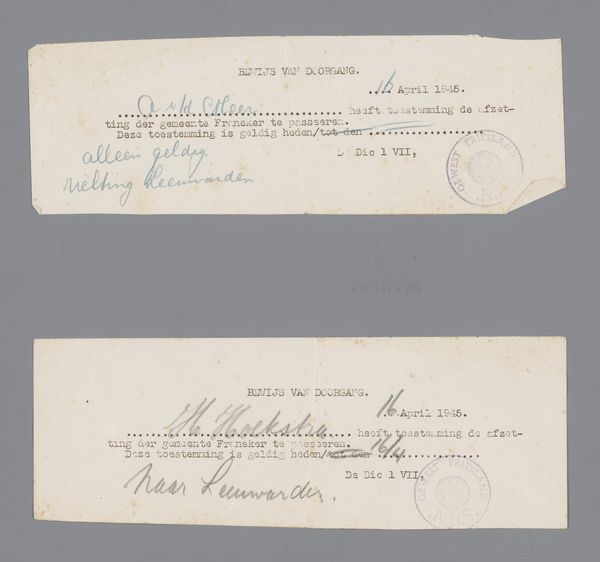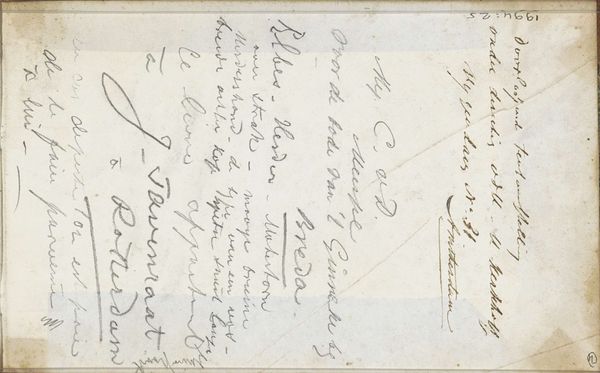
Documenten, correspondentie, boedelinventarissen en lijsten van schilderijen en tekeningen van George Hendrik Breitner en zijn erfgenamen c. 1920 - 1950
0:00
0:00
diversevervaardigers
Rijksmuseum
Dimensions: height 350 mm, width 250 mm
Copyright: Rijks Museum: Open Domain
Curator: This intriguing collection before us is titled "Documenten, correspondentie, boedelinventarissen en lijsten van schilderijen en tekeningen van George Hendrik Breitner en zijn erfgenamen." It's dated roughly between 1920 and 1950, a poignant epilogue to Breitner's life and work, presented through mixed media on paper. Editor: My first impression is one of fragmentation—these disparate ephemera hint at a life, an estate, but in a way that feels incomplete. The gray background grounds the small paper remnants but overall I’d call it emotionally muted, yet intensely personal in scale and detail. Curator: Precisely. Think about what these fragments represent: the bureaucratic afterlife of an artist. Inventories, correspondence… They illuminate the legal and financial frameworks that inevitably engulf artistic legacies, shaping how they are remembered and disseminated. How society inherits art and its makers, for better or worse. Editor: True. From a formal perspective, the collage of printed forms, handwriting samples, and even that small postage stamp all contribute distinct textures and graphic elements. Consider the contrast between the ordered typescript and the more organic quality of the penned addresses. The placement of the dark squares surrounding the images create borders—like small frames—while creating hard, contrasting lines to juxtapose. Curator: And beyond the aesthetic variation, each fragment also narrates a specific power dynamic. Who had the authority to catalogue, to assess value, to correspond about Breitner's legacy? It suggests narratives of institutional control and potential struggle over interpretation and ownership. This visual semiotics speaks to that control that bureaucracy takes. Editor: Indeed, one has to ask who compiled all these objects together into a unified, larger format for posterity, because each part creates a larger story through its unique visual. Curator: Right—and looking closer at the "rouwkaart" printed to commemorate M.C.J. Breitner-Jordan and dated November of 1949 emphasizes the role of grief. Its framing and font speak both about institutional design but also how death lingers through its influence. Editor: It also highlights the strange yet familiar intersection of art and commerce, how one enables the other both when alive but more poignantly, in retrospect, when their life concludes. Curator: So, as a study of post-mortem categorization, these mixed-media and paper pieces, speak to our fascination with ordering lives but the constraints surrounding them. Editor: An administrative fingerprint—ordered chaos perhaps—left for posterity to examine at the juncture of aesthetics, the personal, and archival control.
Comments
No comments
Be the first to comment and join the conversation on the ultimate creative platform.
